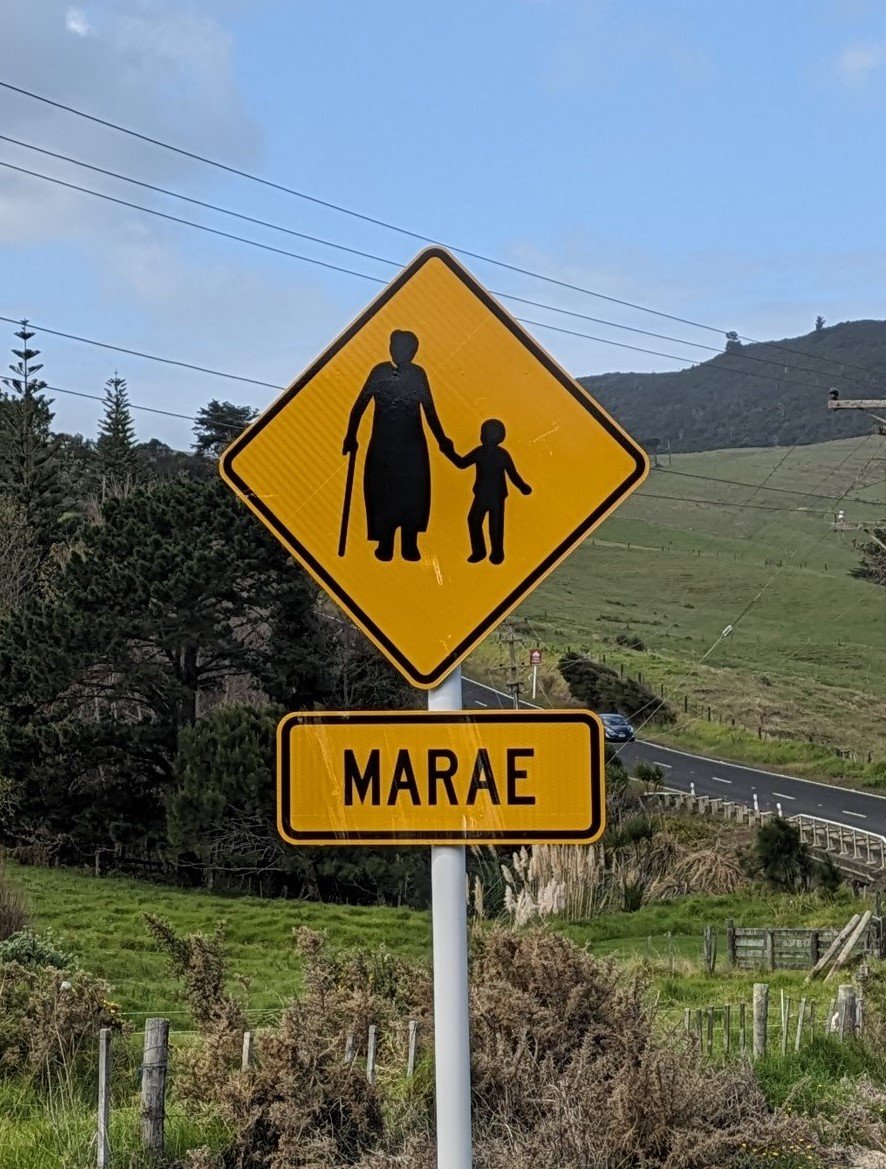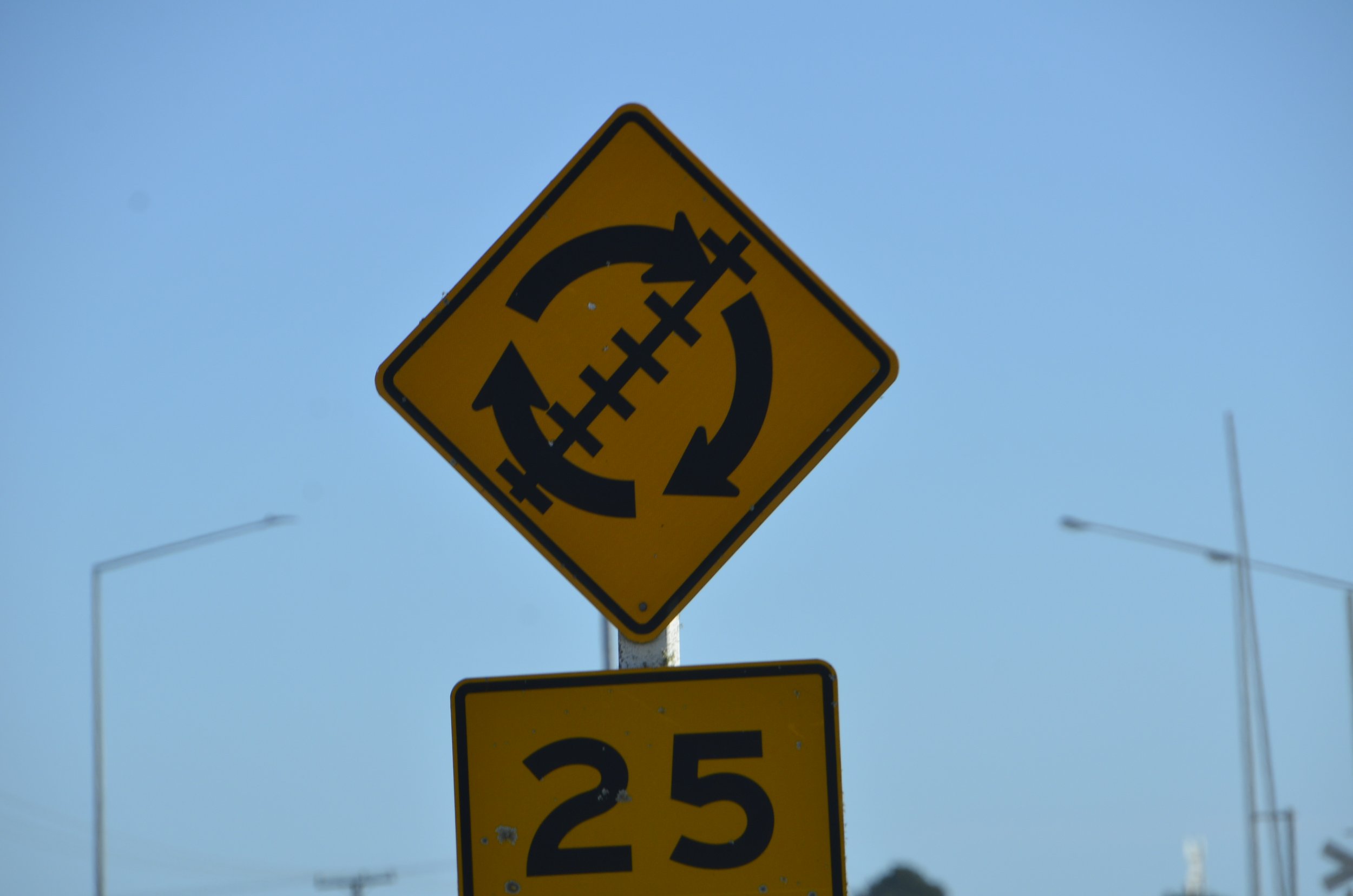Driving Miss Lisa [around New Zealand]
In the 53 days that we had our Toyota Corolla, we drove 8700 kilometers (~5400 miles). We left Auckland airport, went south, looped the South Island in a rough figure 8, then came back and did the same in the North:
(To see a full sized, interactive version of the map, just click on the full screen symbol in its top right corner.)
The roads are, as expected, pretty good. Just don’t be silly and expect multiple lane freeways outside of the very biggest cities. The major 2-lane highways have fairly frequent passing lanes, and you are alerted adequately to one-lane bridges, including which direction has the right of way. Generally, signage is exceptional, particularly on the major motorways in the heart of Auckland.
The signs, however, can be different than those we are used to:
This one is pretty easy!
Although we didn’t see any Kiwis in the wild, we apparently were in many of their territories:
I was initially perplexed at how many schools had the same name:
…Until we figured out that New Zealand has two official spoken languages, and since 2022, new school warning signs need to be in both te reo Maori and English!
One really neat sign that we saw in a few places is used to warn of an upcoming communal meeting house of the Maori community, where pedestrians of all ages might be present:
Granny and child.
New Zealand has 5,300,000 people, and 103,483 square miles. Or, the population of South Carolina in an area the size of Colorado. Those numbers are actually misleading though, because a whopping 30% of the people live in Auckland alone–and the urban population amounts to 87%. (Compared to 80% in USA) So, there are a lot of wide-open places, with Northland reminding me of Appalachia and Michigan’s Upper Peninsula, and the western side of the South Island being very reminiscent of the American West. This is true even with respect to the type of commercial traffic that is on the roads:
Pretty common in both Northland and the west of the South Island.
These logging trucks were a common occurrence on the roads. As Lisa noted earlier there are presently about 5 sheep for every person in NZ, but that is a historic low. In the 1980’s, it actually achieved 22 sheep for every human! But, the declining price of sheep’s wool, and the increasing value of farmed trees, have caused a continued decline.
Particularly outside of the major cities, stop signs and traffic lights are rare; like many countries, New Zealand instead embraces roundabouts. As normal, those already in the roundabout have the right of way—but there is always some exception to the rule!
Yeah, the train pretty much always wins!
Finally, like in the USA, some signs just made us want to say “Duh.”
“Two Nations Divided by a Common Language”
That joking observation is generally applied to describe the US and England, but it applies equally well to the US and New Zealand.
Looking for a cooler to keep your food and drinks chilled on drives between lodgings? You’ll need to ask for a “Chilly Bin.”
Looking for a tasting room at the winery? The proper term is “Cellar Door.”
And this sign is not related to batteries at all (although it does make a feline non-lover wonder):
A boarding kennel for cats—and this particular one is highly reviewed on Google!
“Grouper” is pronounced “Gropa.”
No is “nawr.”
When you greet oncoming hikers on a trail, the proper terminology is “Hi Ya".”
A “boot sale” at the county farmers’ market has nothing to do with footwear—but there sure are a lot of cars with things for sale in their trunks.
Despite asking and being given examples, we are still at a complete loss as to how to differentiate between a Kiwi and an Aussie based on their speech—although both nationalities claim that it is obvious!
Tidbits for American Travelers:
“Nashville style” frozen chicken strips (huh?!?) in the frozen section of the grocer.
Petrol: usually around 2.80 NZ per liter ($6.28 USD per gallon). Most expensive was 3.25NZ ($7.30).
Portapotties are everywhere–even in midst of long mountain hikes, where they sometimes appear to be serviced via helicopter. Consistently clean and well stocked with toiled paper. And, when you are driving, small towns will have well marked public toilets (often in the local library).
24/7 fuel stations usually require a chip and PIN credit card–very few of them have been updated to allow pay by phone.
If you are interested in nice meals, we found the NZ cuisine magazine website to be a handy place for evaluations of restaurants around the country–especially its “hatted restaurant” listing: https://www.cuisine.co.nz/cgfg2023-hatted-restaurants/. (And, if you are really interested, we’ve kept a list of the best restaurants and wineries that we encountered.)
If you are like me, your only real exposure to “hedgerows” comes from Led Zeppelin and Harry Potter. New Zealand, however, takes its hedgerows seriously.
These are basically full-sized trees!
Pasture line, or Berlin Wall??
We definitely recommend the Auckland Zoo, where we spent most of our last day in country. As we prepared to fly off to Fiji, this fellow bade us goodbye:
(To see the video, you’ll need to click the “Read in browser” link below this!)









